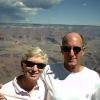RNAV(RNP) approaches
-
Members Online
- Rick Junkin
- MikeOH
- Lionudakis
- TangoTango
- mariosmt
- Fysiojohn
- flyboy0681
- Shadrach
- DXB
- donkaye, MCFI
- HelofixR
- rklems
- Marvin
- ta2too
- eman1200
- Marc_B
- Lax291
- JohnMooney66
- Sue Bon
- 00-Negative
- 201Mooniac
- kortopates
- LOCOLJ
- rbmaze
- Scott Ashton
- bluehighwayflyer
- pirate
- MooneyMax
- TCC
- redbaron1982
- Planter
- Deb
- MDMooney
- exM20K
- Paul Thomas
- Will.iam
- dzeleski


Recommended Posts